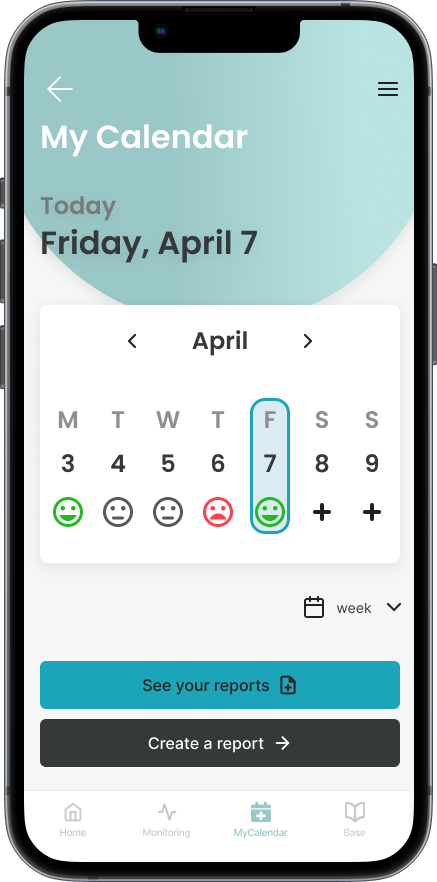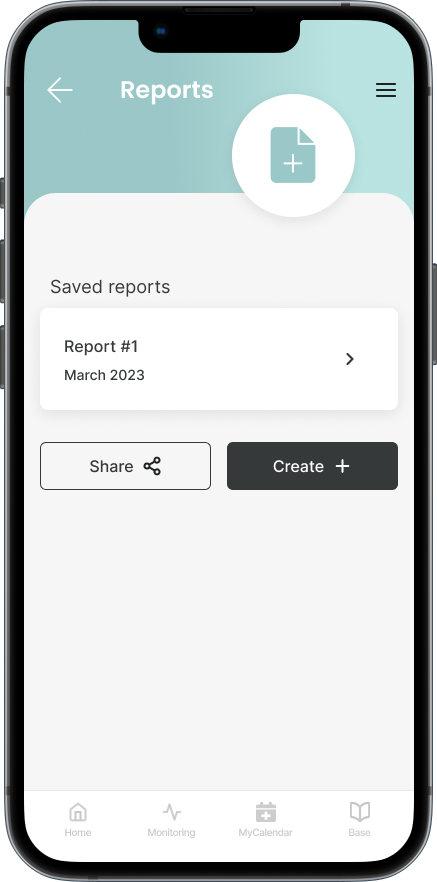Living with chronic disease
Rheumatic autoimmune diseases are a group of chronic conditions that occur when the immune system attacks healthy tissues. These diseases can affect various parts of the body, including the joints, muscles, bones, and organs.
Rheumatic autoimmune diseases are often characterized by inflammation, pain, and stiffness, and can significantly impact an individual's quality of life.
It is estimated that autoimmune diseases affect 10% of the world's population. They are often difficult to diagnose due to non-specific symptoms.
RheumApp
A mobile application to help people understand their condition and improve daily lives.
Case summary
Product vision
Mobile application that makes it easier for users to monitor their condition both for self-awareness and to improve communication with the doctor during a medical appointment. It is also intended to be a source of information created and verified by specialists, in accordance with the latest scientific knowledge.
Problem
The diagnosis of an autoimmune disease is always difficult for the patient and his family. The fact that the disease is chronic and lifelong forces the patient to rearrange his entire life to improve his daily functioning. There is no one-size-fits-all approach to understanding or treating the disease - everyone experiences the disease in their own way, with varying severity of symptoms.
Managing these symptoms requires ongoing monitoring of medication usage, symptom patterns, and other health factors, as well as making lifestyle modifications such as diet and exercise. However, keeping track of all this information can be challenging and overwhelming for patients.
Additionally, independent and incompetent search for medical knowledge on the Internet may end badly for the patient.
Solution
RheumApp is a mobile application for people suffering from chronic rheumatic diseases.
The goal was to create an intuitive and user-friendly application that helps users of all ages to easily monitor the progress of the disease, remind of medication and educate to improve everyday functioning.
One of the key benefits of the RheumApp is its ability to centralize all information related to the user's disease management. Medication history, specialist visits, blood test results, and x-ray reports can all be accessed through the application, providing a comprehensive overview of the user's treatment history. This feature also enables users to monitor the course of their disease over time and identify trends or patterns in their symptoms
Another critical feature of the RheumApp is its ability to facilitate better cooperation between patients and doctors. By collecting and transferring information related to the user's disease management, the application can help healthcare providers gain a more comprehensive understanding of the user's condition and make more informed treatment decisions. This information-sharing can also help patients become more engaged in their own care and make more informed decisions about their treatment plan.

Enhancing everyday living
Keep track of your symptoms, medication and appointments in one place and get personalized tips on diet and excercise to help manage your condition
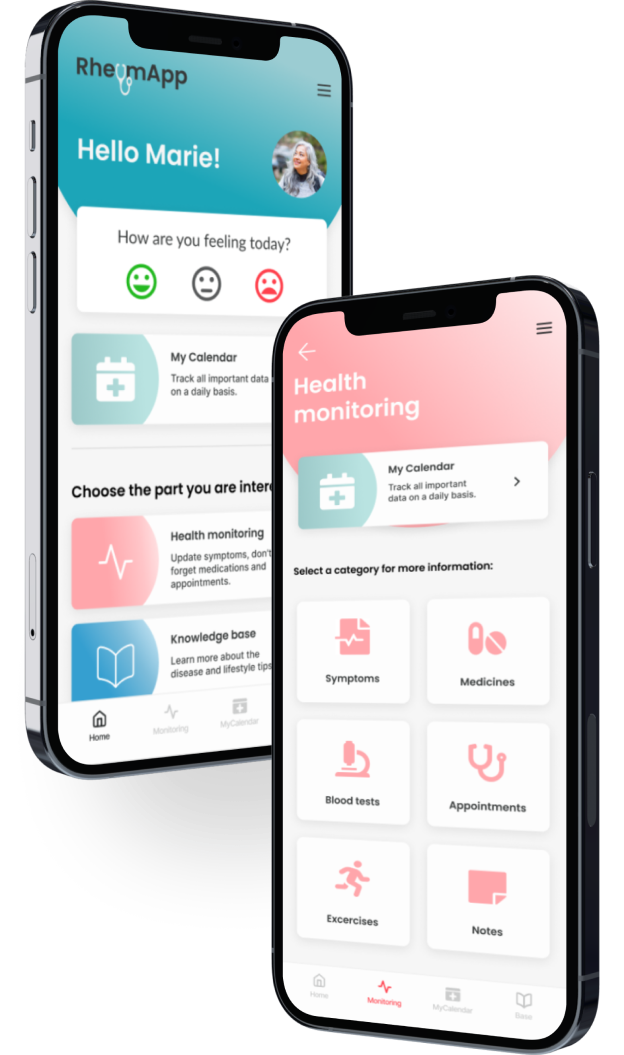
Process highlights
ROLE
research, user flows, sketching, wireframing, visual design, prototyping (Individual project)
PROJECT PLAN
one week of discovery and ideation, followed by a week of prototyping and designing. /April 2023
TOOLS
Figma, Adobe Illustrator
Design process
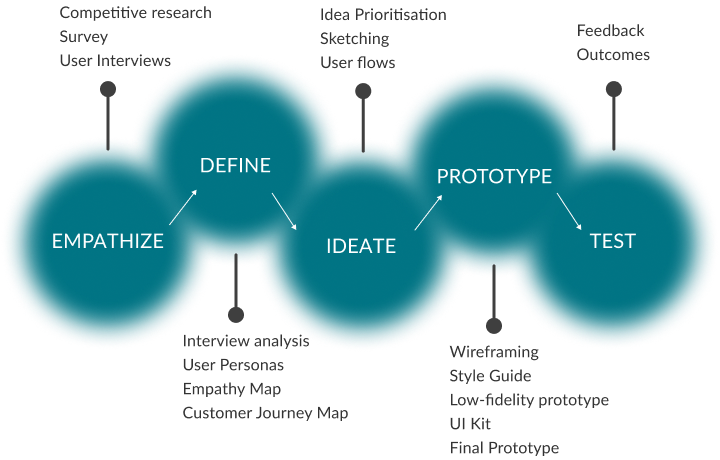
Discovery and Ideation
STEP: EMPATHIZE
The purpose of this research is to understand the needs and requirements of people suffering from chronic rheumatic diseases, in order to design a user-friendly mobile application that will meet their needs and expectations. The research will also help to identify potential user personas and use cases, which will inform the design of the app's interface, features, and functionality.
The research will focus on identifying the pain points and difficulties experienced by people with rheumatic diseases in their daily lives, such as tracking their symptoms, managing medication, and scheduling appointments with healthcare providers. By understanding the needs and challenges of this target audience, RheumApp can be designed to address these specific pain points and provide helpful solutions for everyday living.
Ultimately, the research will help to create a user-centered application that meets the needs of people with rheumatic diseases, while also providing valuable insights into how technology can be used to improve the lives of those living with chronic illnesses.
Competitive research
Competitor analysis is an important step in the design and development of a mobile application. It helps to understand the market and identify the strengths and weaknesses of existing solutions, which can inform the design of the new app.
The market is full of health apps. Often, such applications are geared towards the largest possible group of users, because they are quite universal and do not address a specific problem. I focused on the analysis of three competitors, who are most concerned with rheumatic diseases.
MyRA
- developed by a reputable organization in the field
- tracking symptoms and medication
- educational resources
Strengths
- focused on rheumatoid arthritis
- technical issues reported by some users
- UI can be confusing for some users
Weaknesses
ArthritisPower
- variety of features (symptom and medication tracking, connecting with healthcare providers)
- compatible with wearable devices
- collected data used for research purposes
Strengths
- user interface can be overwhelming
- no customization of symptoms
- limited availability
Weaknesses
Healthline
- wide range of health-related information (including articles)
- access to healthcare providers (telemedicine system)
- symptom, medication and appointments tracking
Strengths
- not specifically designed for arthritis patients
- overwhelming for some users
- limited availability (telemedicine)
Weaknesses
Research and Survey
I started by researching many thematic groups on social media platforms. Groups bring together thousands of people with rheumatic diseases. Users share their observations, opinions and ask many questions.
It was these questions (and answers) that made me realize that patients still know too little about their disease and do not know where to look for this knowledge. I invited our potential users to answer closed-ended and open-ended questions and share their habits and experiences.
After questionnaires and multiple forum reviews, I gathered 56 responses, mostly from groups related to the topic on social media. This allowed me to take a broader look at people's expectations.
How often do you see a rheumatologist?
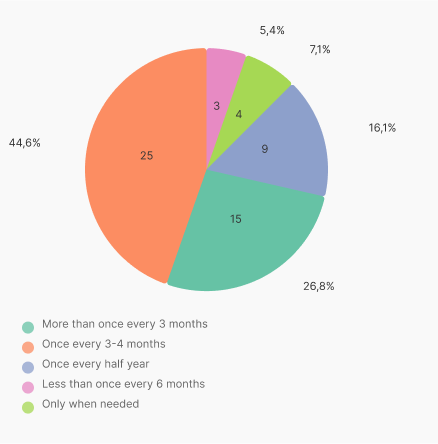
Do you ever forget to take your medicine?
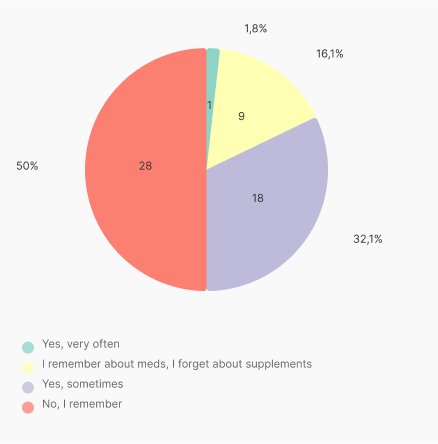
Do you ever feel "blank" when visiting a doctor and forget to tell the doctor about various symptoms or worries that have occurred since your last visit?

Do you carry out any observation of your health condition to provide the collected information to the doctor?

Do you feel confused by the amount of different (often contradictory) information about the disease and treatment coming from many sources?

If a mobile application was designed, which would be both a reliable source of knowledge about the disease and could monitor your health, would you be interested in using it?
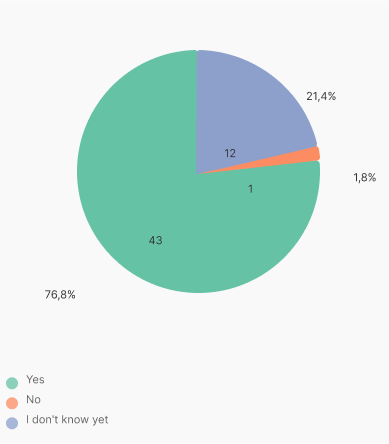
How do you assess the knowledge provided by the doctor during a medical appointment?

What sources of knowledge do you use?

From the survey results, I found out that:
- Patients have a problem with providing information and symptoms to the doctor. This is probably due to the long time between appointments and inaccurate monitoring (or no monitoring at all).
- Patients feel overwhelmed by the amount of different information. They often do not know where to look for knowledge or they get it from unreliable sources (social media, general interest websites etc.)
- Patients do not feel sufficiently informed by their doctor. They feel rushed during the visit, lack of commitment and lack of initiative.
Interviews
To get a better understanding of the audience, I chose 4 participants who represent the users.
I was able to choose and highlight several user profiles that represent different approaches. During the interviews, I learned that the key to design user-centered application is to take into account easy-to-use interface, reminders and notifications, reliable information and monitoring (with sharing option). Several interviewees expressed a desire to share data with their healthcare providers during appointments. This could be a valuable feature of product, as it could help facilitate more informed discussions between patients and providers.
STEP: IDEATE
Idea Prioritisation
Hence, I identified the opportunity areas for RheumApp:
MyCalendar as main feature
- Viewing data over time
- Tracking symptoms and treatment
- Creating personalized reports that can be shared with doctor
Easy to use for everyone
- Three thematic sections indicated by different colors
- Straightforward navigation, always easily accessible
- Accessibility for all age groups
Opportunity to gain knowledge
- Educational resources created and verified by experts
- Access to scientific database, useful links
- Useful lifestyle tips
BRANDING
The next step was to decide on brand identity and visual style.

PRIMARY
#1CA5B8
#9BCCD2
#DAEBF2
ACCENTS
#DE535C
#FFA6AB
#FEECED
#359FD0
#7CBCDA
#D2ECF8
#9AC7C7
#B9E3E1
#E3F3F3
I wanted to show the combination of both words, so I decided to use the logotype.

PROTOTYPES & UI KIT
Applying styles and bringing prototype closer to detailed version. At this stage I focused on the hierarchy and prioritization of buttons, forms, inputs, checkboxes etc. I started designing cards for various uses. The next important step was to create reusable components
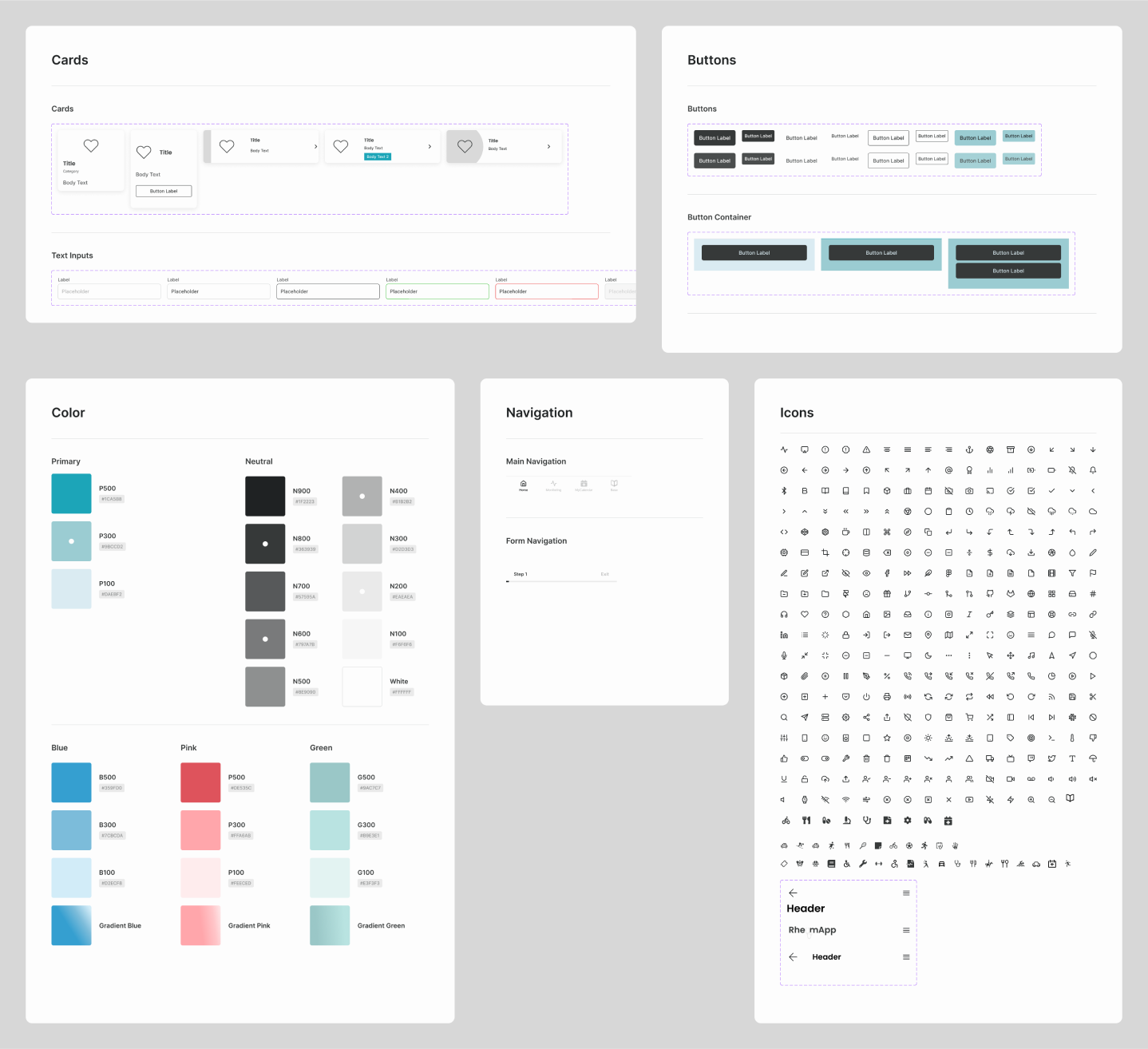
Outcomes
How did potential users react?
High-fidelity prototype has been tested on 8 users in order to evaluate the expected functionalities and visual style. They could go through basic user flows and check micro-interactions. I received almost entirely positive feedback. Users loved the idea, visual style, marking the sections of the application with different colors, easy navigation. An often mentioned advantage was the ability to create reports and easily share them. Users were not overwhelmed by the number of features. However, many users raised concerns about the security of their sensitive data. Some users came to the conclusion that the pain scale should be more extensive.
What are my thoughts?
Based on the finding from both research and potential users’ opinions I were able to locate and make minor adjustments. Additional security measures such as fingerprints or facial recognition should also be implemented. In order for this application to make sense as a product, it is necessary to integrate with well-known medical associations. This would be to supervise the content as well as access to the latest scientific researches and medical journals.
Next steps
In order to develop the application, it’s good to take into account additional user needs, called "nice to have" features. This will increase the application potential and competitiveness. These include creating a social platform for users to communicate with each other and a possibility of teleconsultation with doctors.
Final designs
The application has been divided into 3 sections: health monitoring, knowledge base and MyCalendar. Each of them is assigned a different color for easier use and navigation.
From the homescreen, we can select the section we are interested in. The navigation bar visible at the bottom of the screen also allows us to select a section, no matter which screen we are currently viewing.
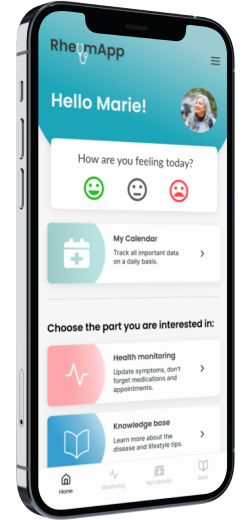
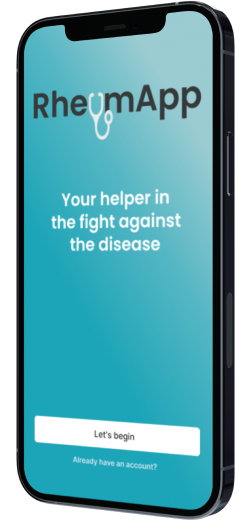
Onboarding
Welcome screen and beginning of onboarding with with short content describing the advantages of the application.
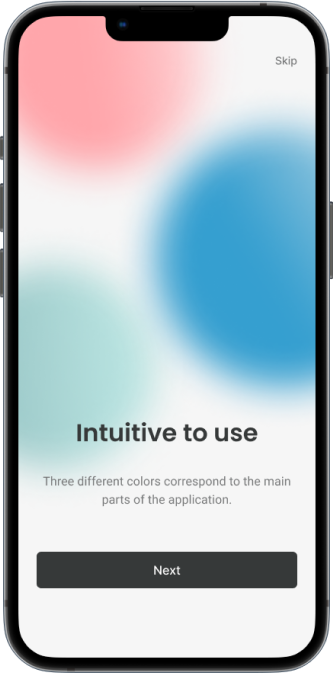
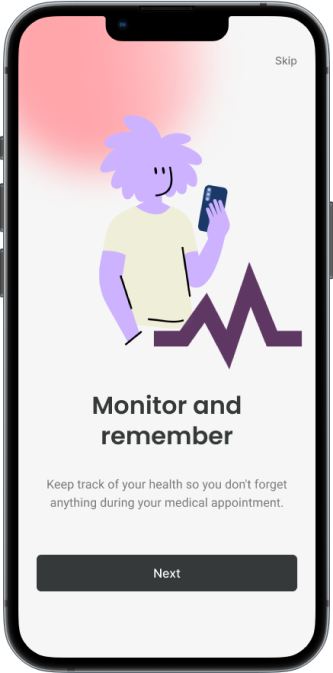
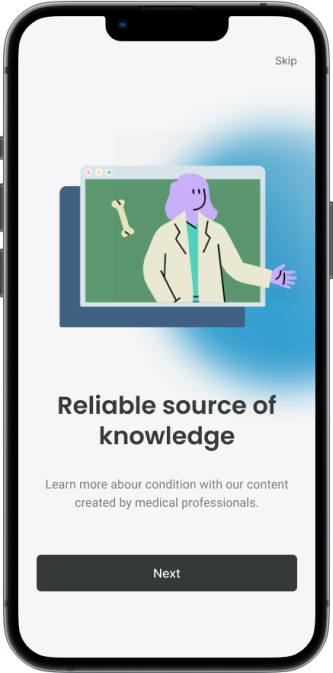

Registration
The stages of creating an account are shown on progress bars, quick registration, personalization and then adding symptoms. Finally, the user should set a 4-digit security code that will restrict access to the application by unauthorized persons. To make it easier for the user to create an account, when password input is activated, the password security rules are shown.
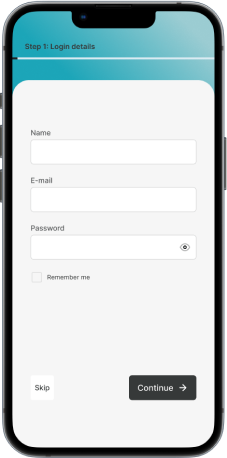
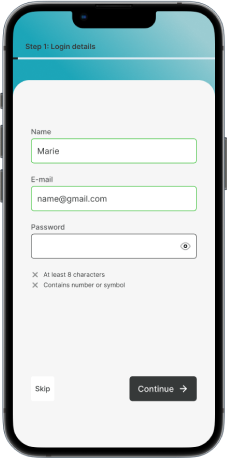
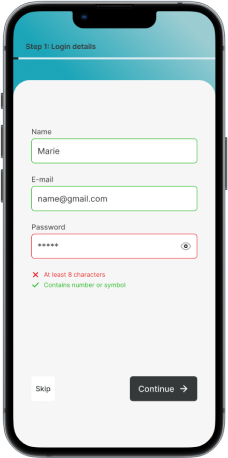

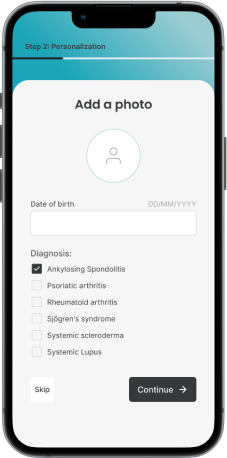


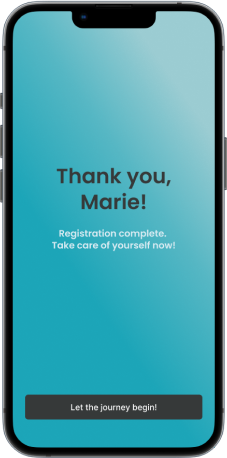
Home and navigation
From the home screen, we have access to all three categories as well as to profile, settings and help. The "hamburger menu" icon visible on each screen provides an easy and quick way to change sections and subpages of the application, as well as access to the profile, settings and help. The navigation at the bottom of the screen provides access to the start screen and the three main sections.

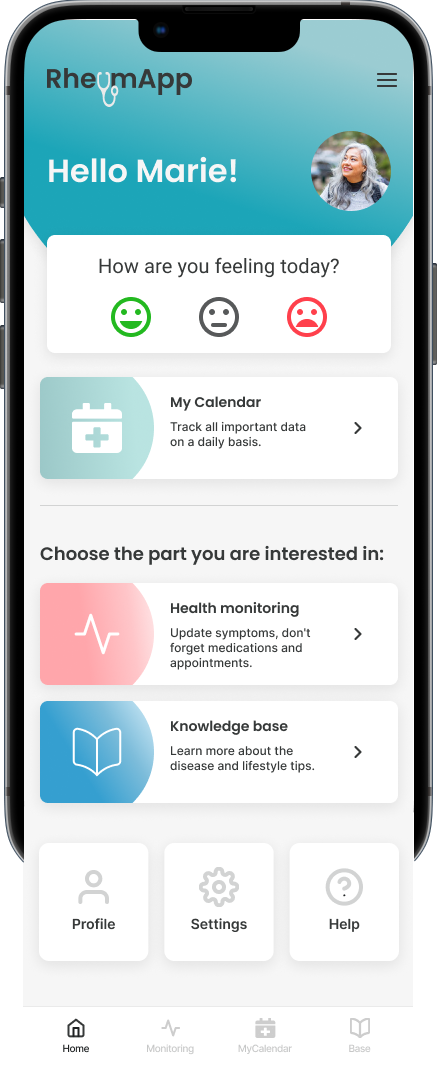
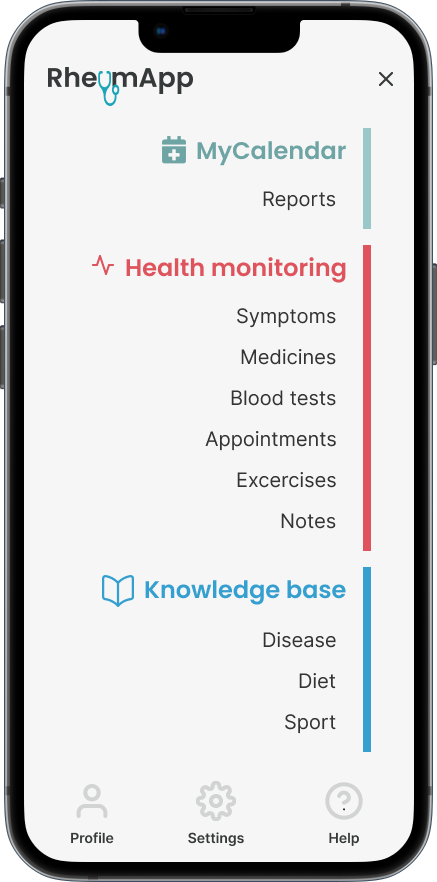
Knowledge base
The knowledge base is divided thematically: general knowledge about the disease, dietary and sports recommendations.
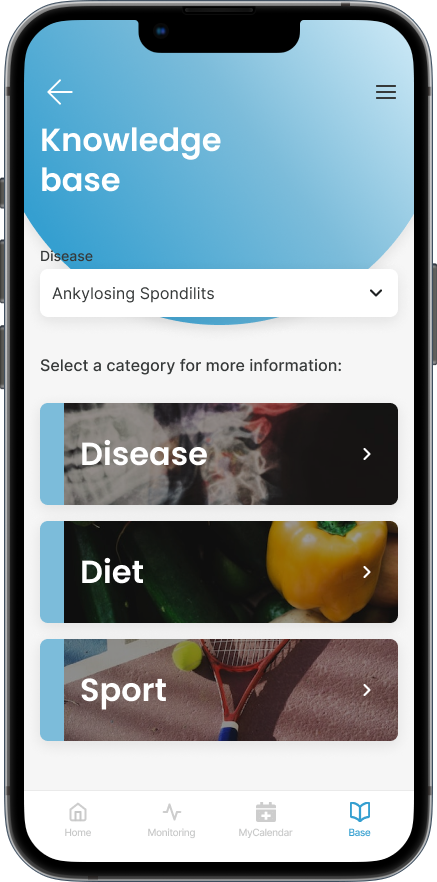
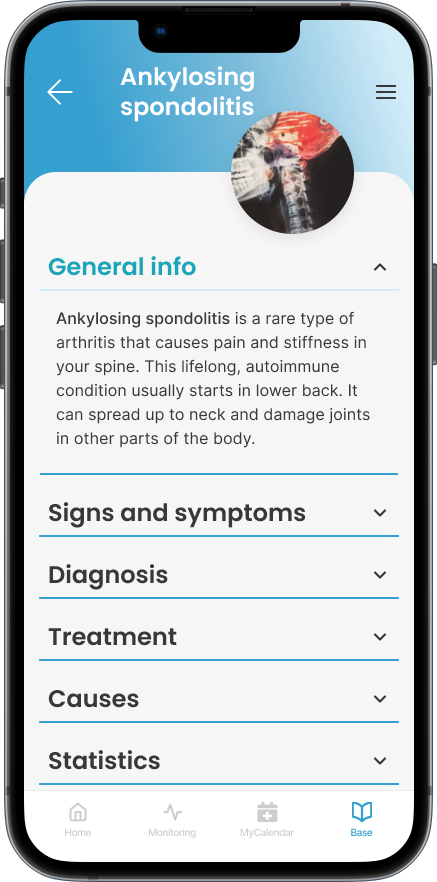
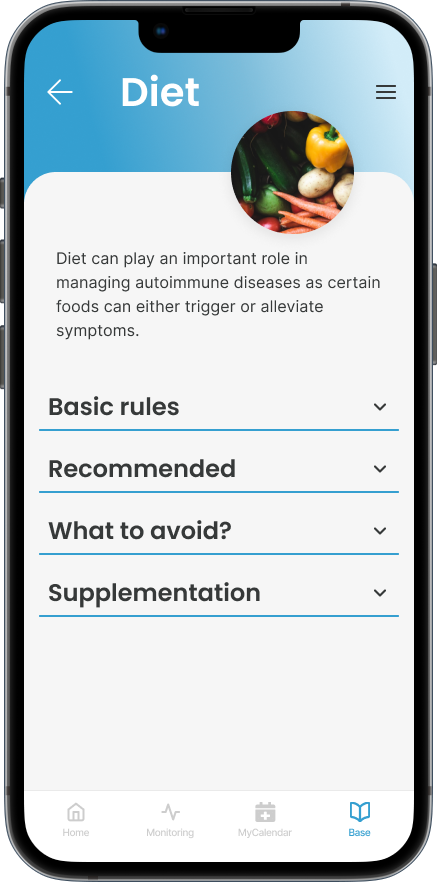
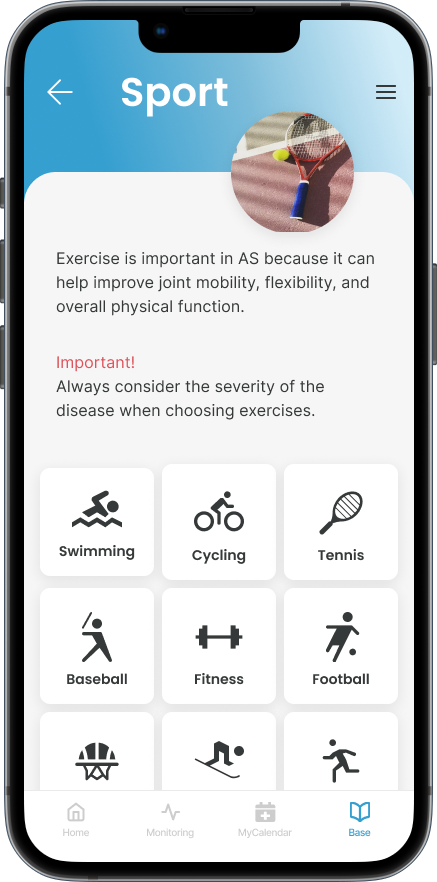
Health monitoring
The user can track their symptoms, add and edit medications, add doctor appointments and set relevant reminders. There is also access to test results or notes.
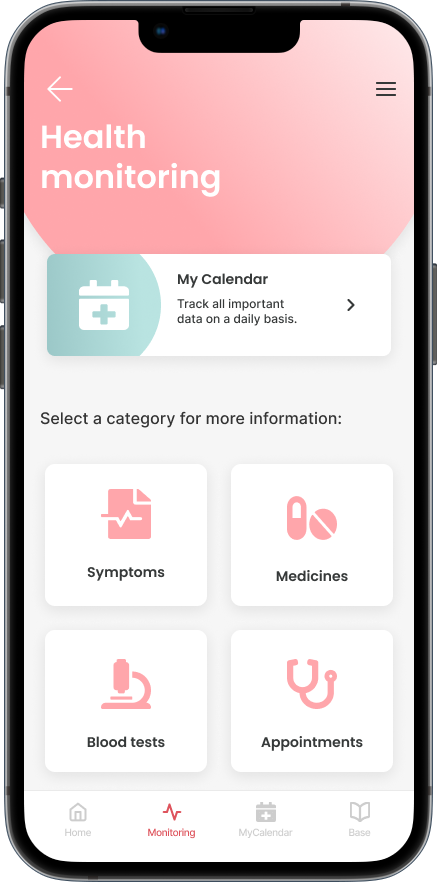
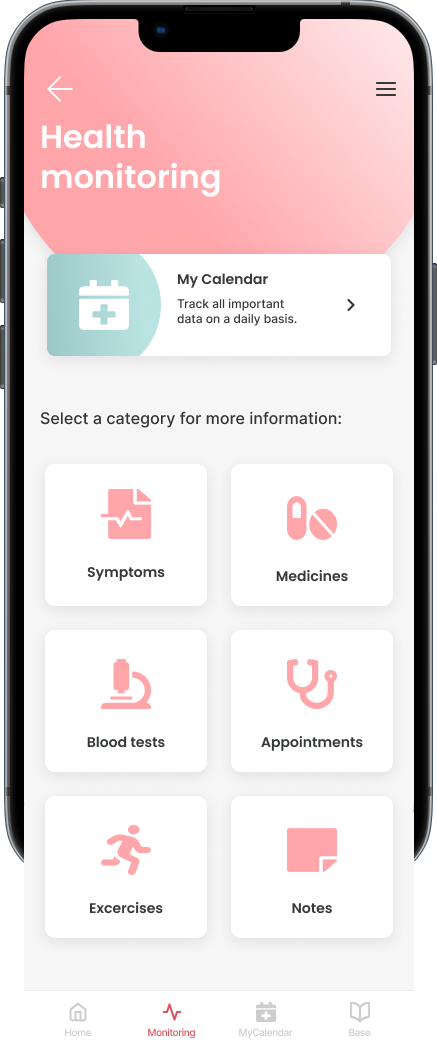




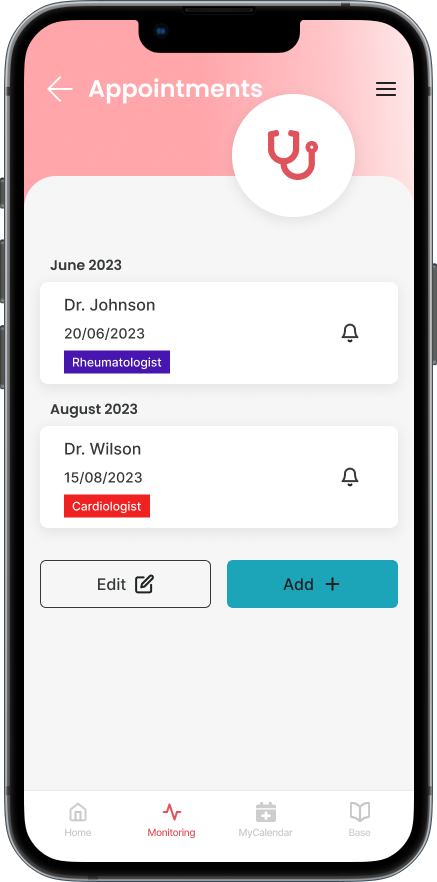
MyCalendar
From the MyCalendar section, user can create a report, which can then be shared to an email address, other applications or saved on the device. Here is a preview of all sections from the health monitoring. The user selects the date he is interested in. He can also go directly to the section from this view to edit it.
